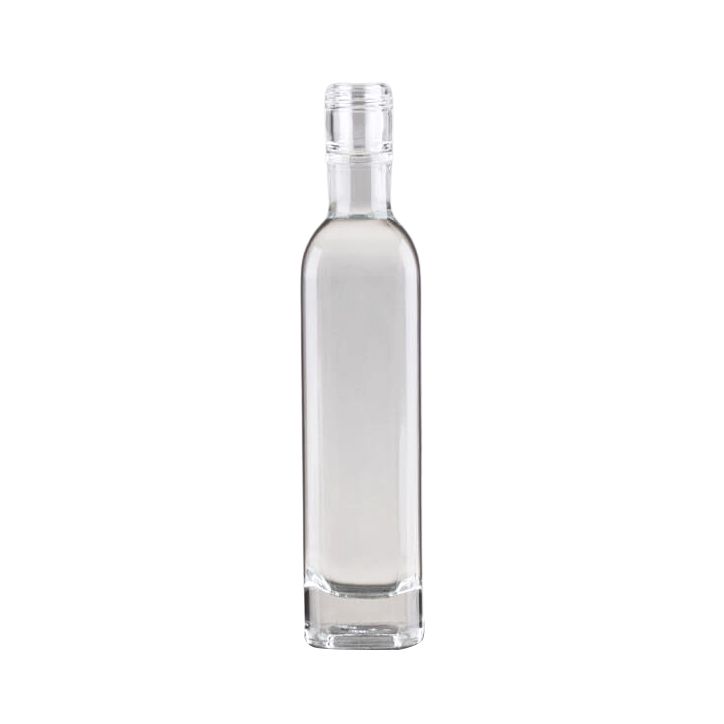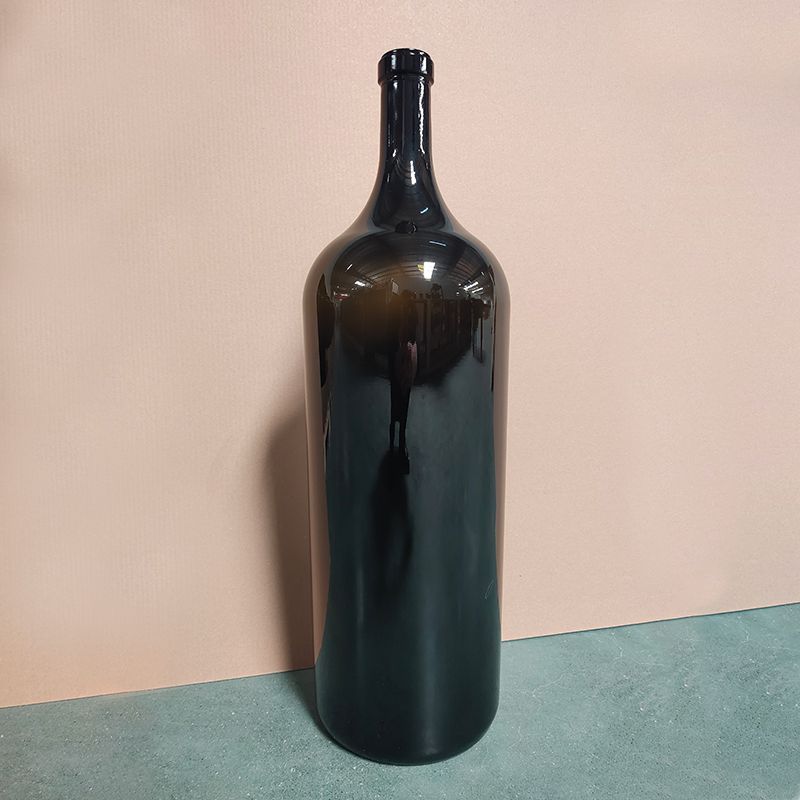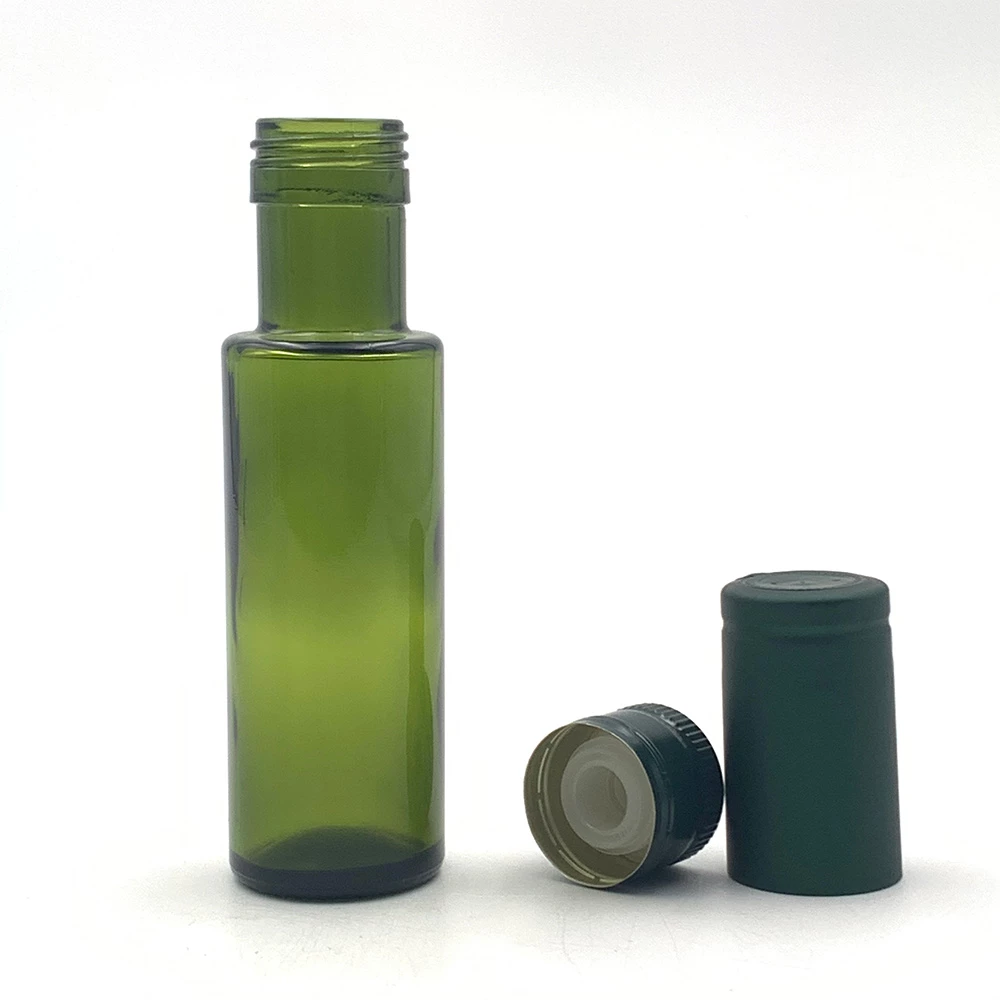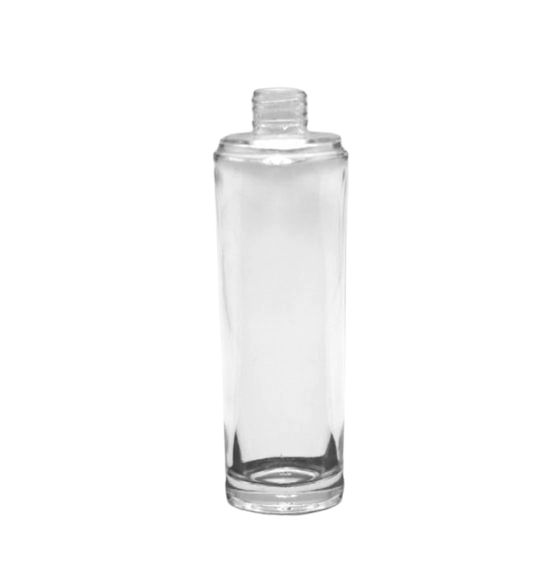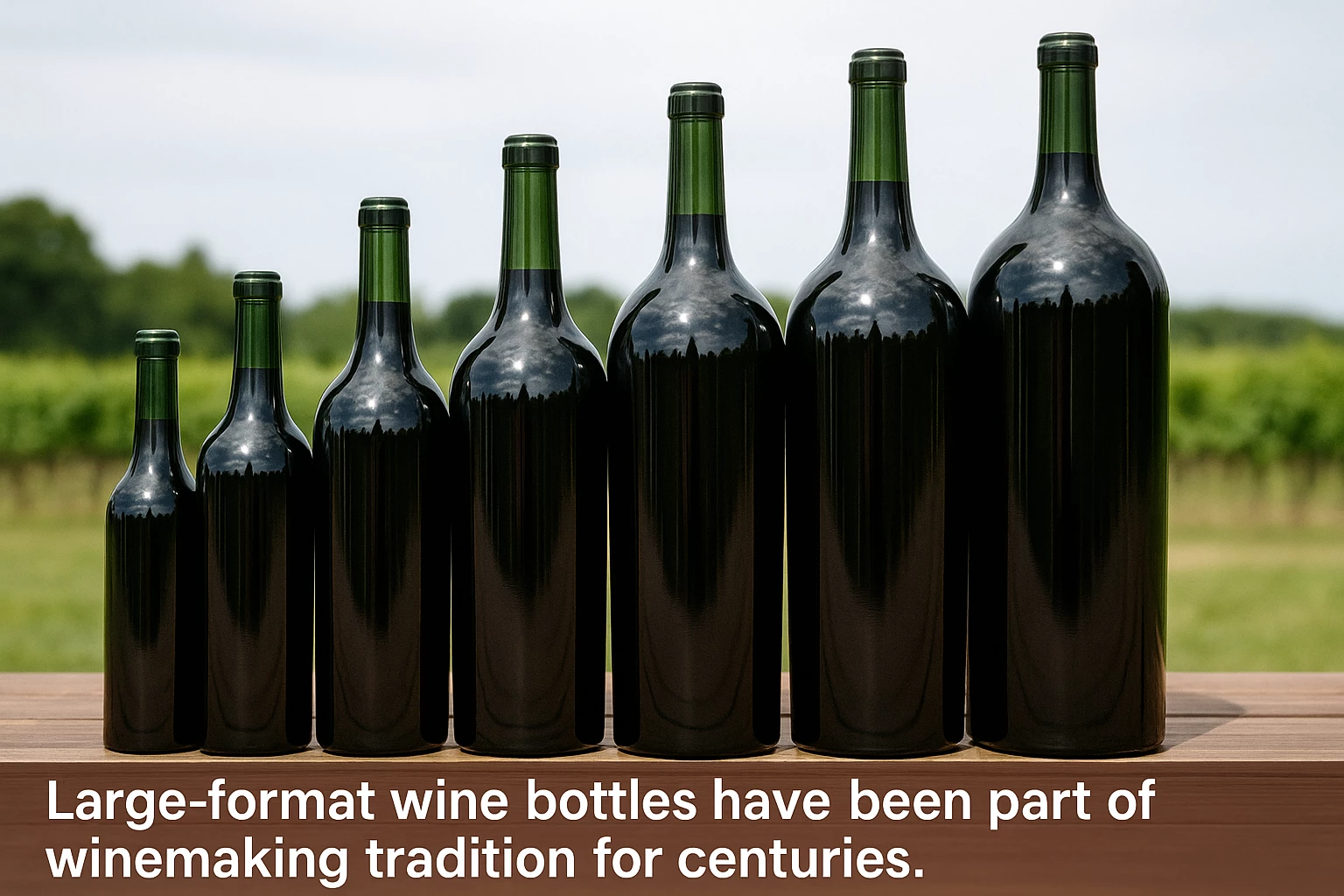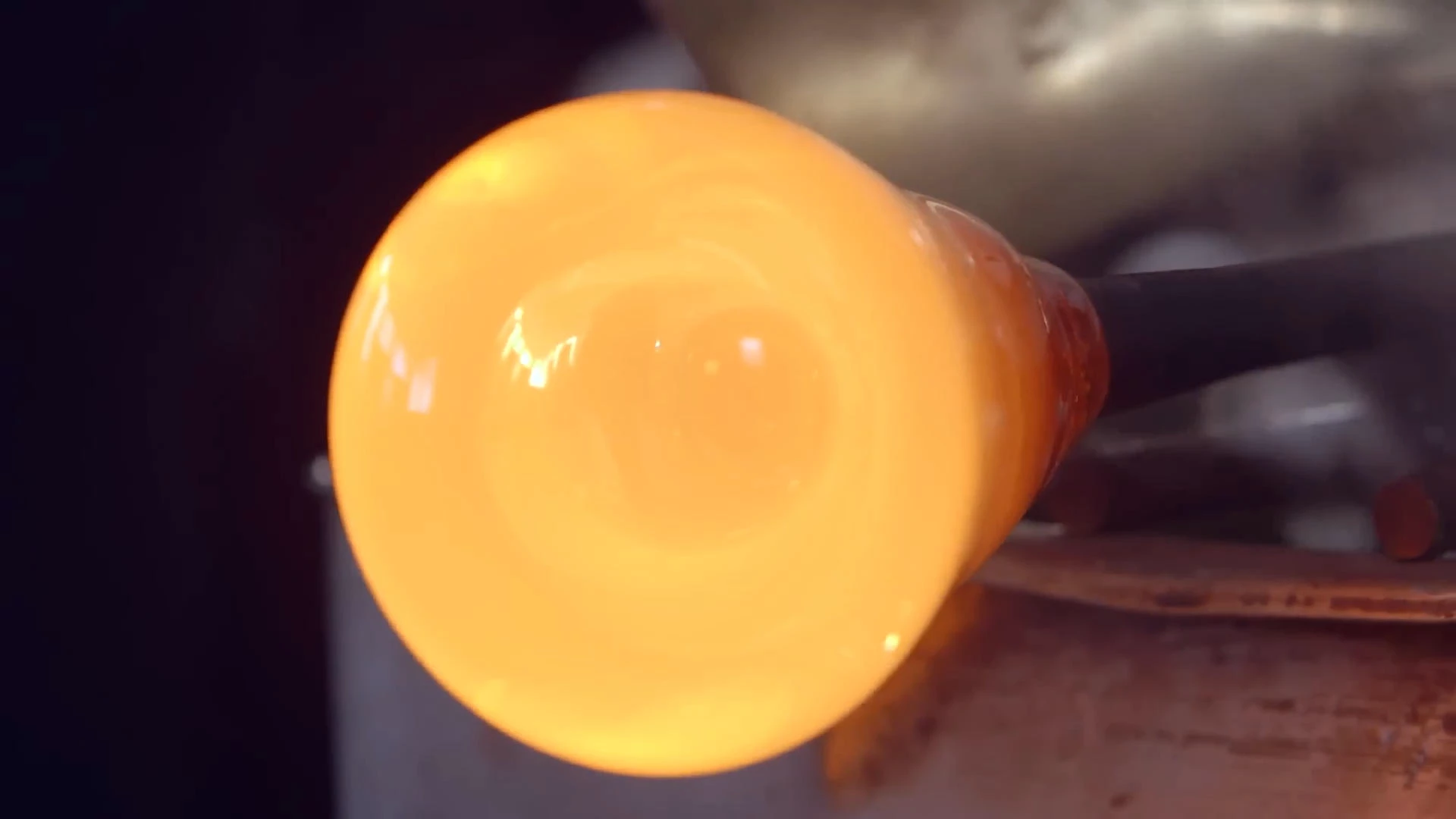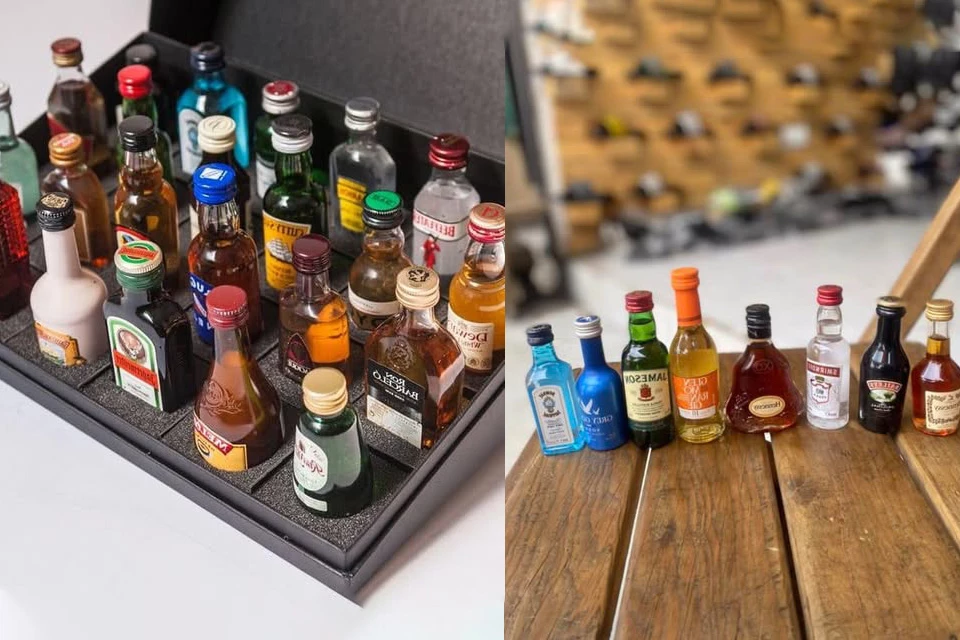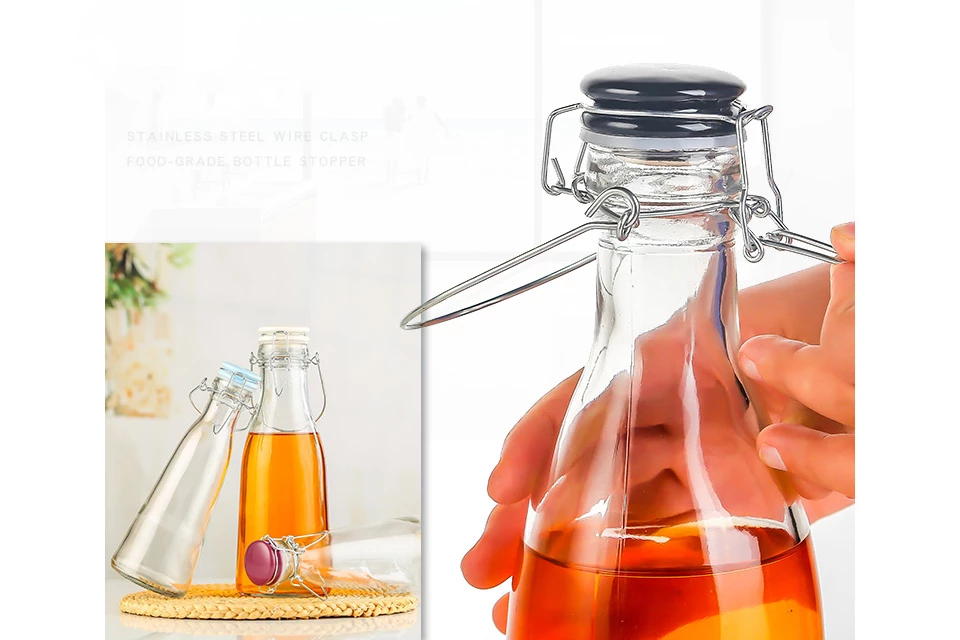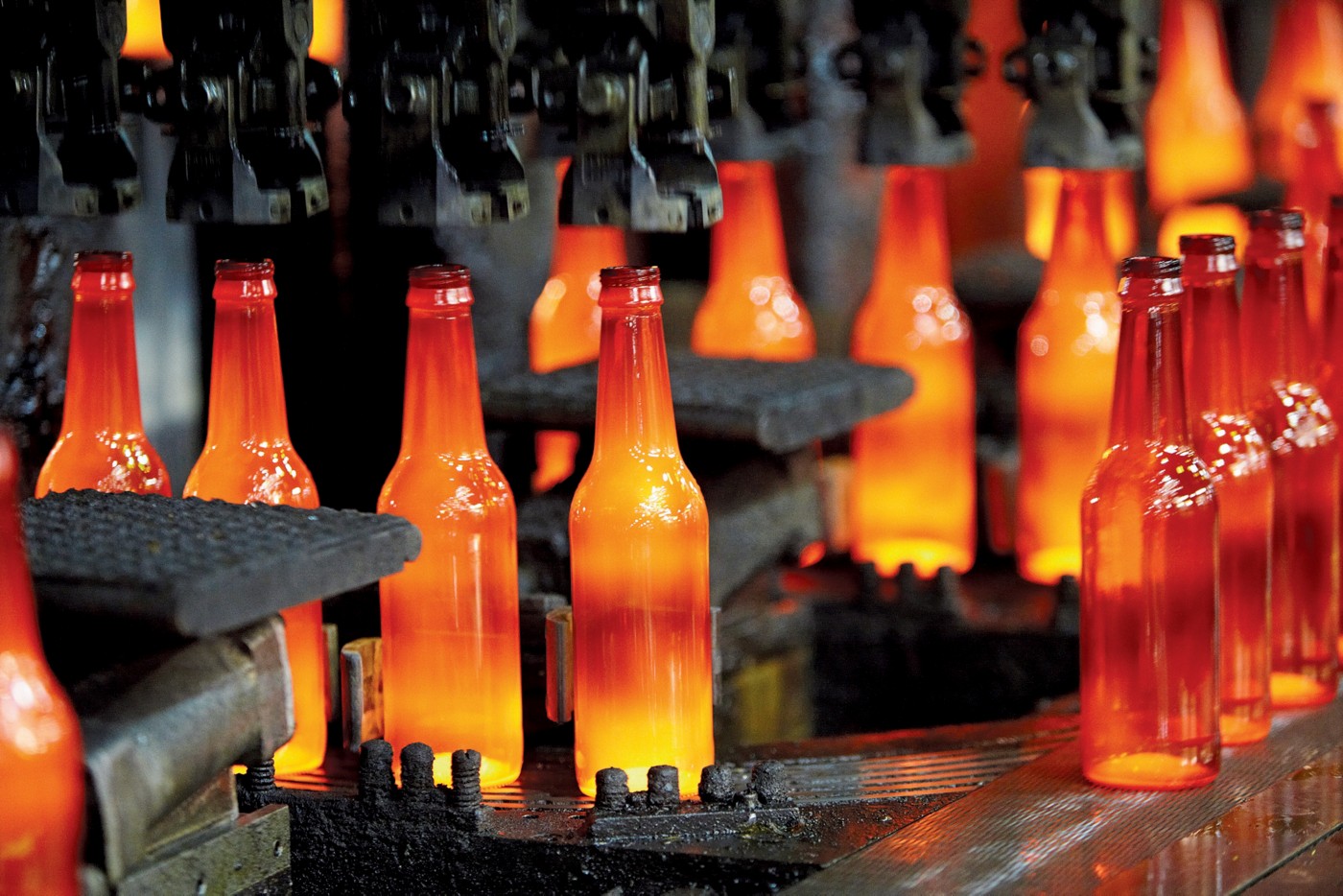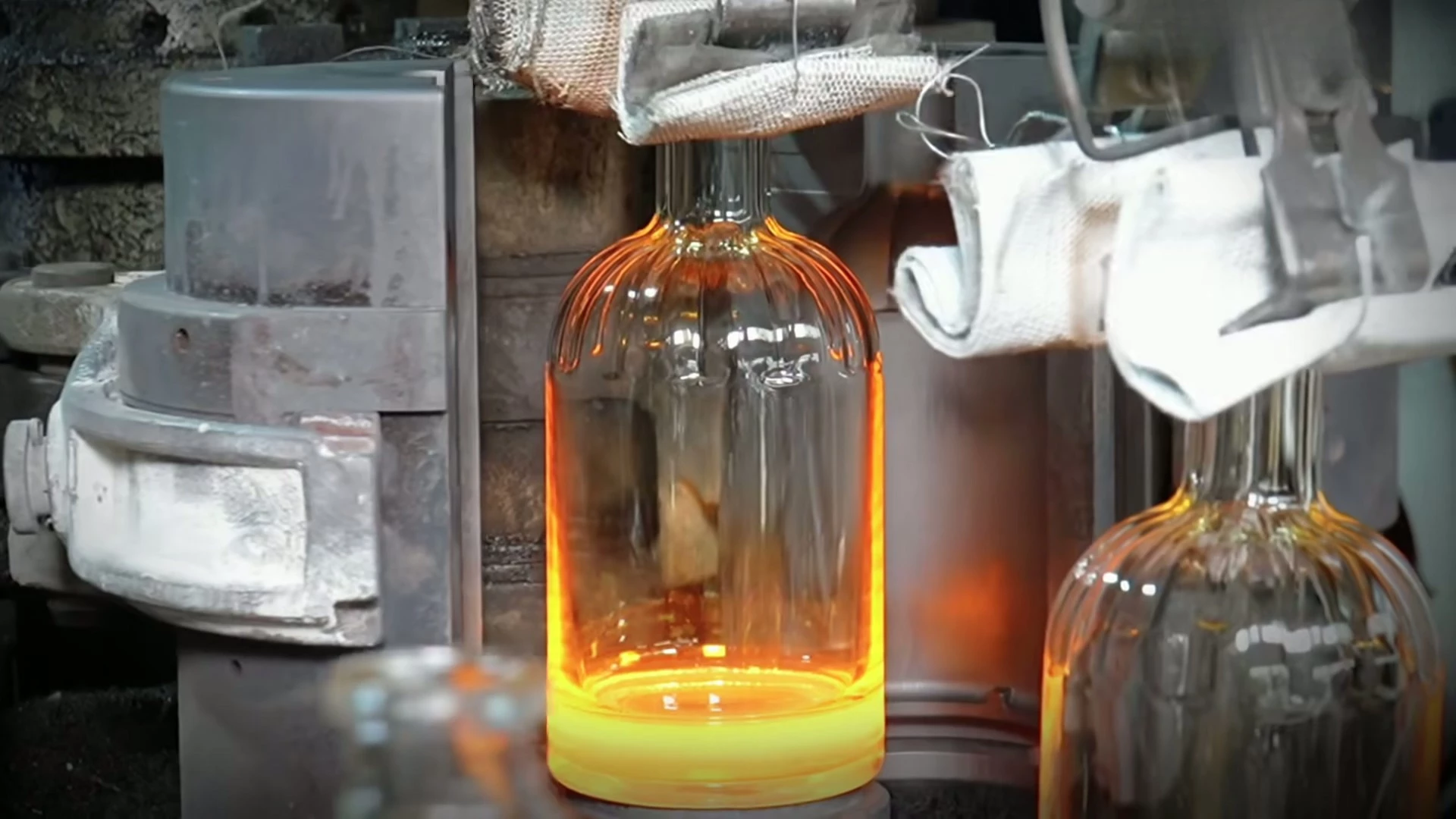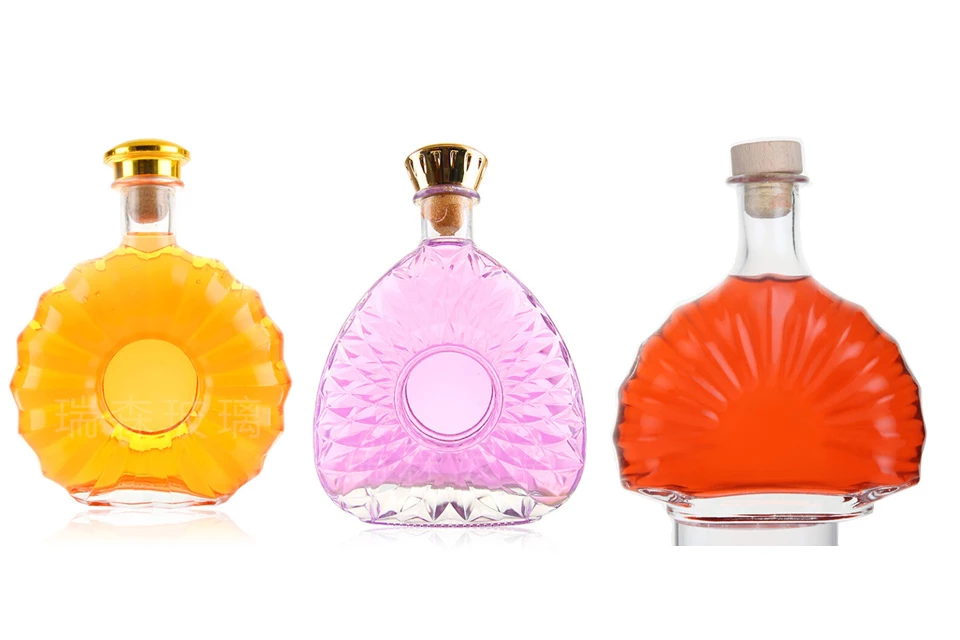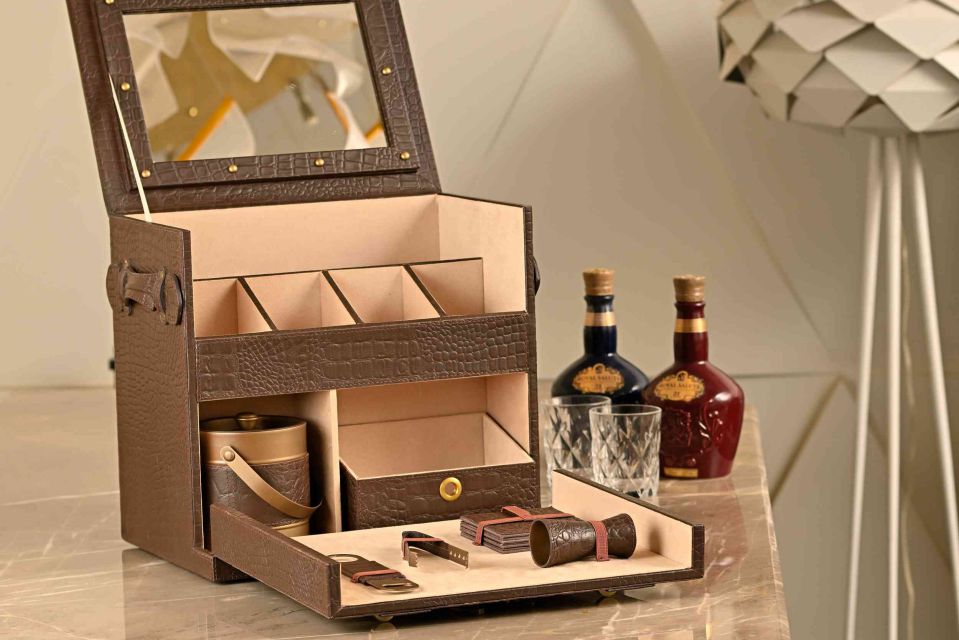As an alcoholic beverage widely consumed worldwide, wine packaging containers, especially glass bottles, have significant design diversity and functionality. These shape differences are not arbitrary, but involve multiple factors such as wine aging potential, style protection, storage efficiency and brand recognition. For those engaged in the wholesale business of wine bottles, it is crucial to have a deep understanding of the characteristics, historical background and commercial value of different bottle shapes.
This guide will systematically analyze the design concepts, applicable scenarios, technical characteristics and selection considerations of mainstream wine bottle shapes in wholesale business, aiming to provide a solid basis for your purchasing and sales decisions.
The Origin and Development of Wine Bottle Shapes: From Pottery Jars to Standardized Glass Bottles
How was the earliest wine stored? When did glass bottles appear?
Winemaking has a long history, and the original storage method was far from modern glass bottles.
- Early Storage Containers (BC to 17th Century):
Wine was originally stored in amphorae. This type of pottery was widely used in ancient Greece and Rome, mainly for holding and transporting wine and olive oil. Its sealing is limited and depends on the wax or resin coating inside the pottery and the leather, cloth or cork seal. - Application of wooden barrels:
With the evolution of winemaking technology, especially for wine that needs to be aged, oak barrels have gradually become the mainstream container for storage and transportation due to their good air permeability and easy rolling. - The birth and evolution of glass bottles (17th century to present):
- Early 17th century: Britain took the lead in making breakthroughs in glass manufacturing technology, using coal-fired glass kilns to produce relatively early glass wine bottles. These early bottles are usually spherical or onion-shaped, with thick walls and dark green or brown colors (due to impurities in the glass raw materials at the time).
- Around 1630s:
Sir Kenelm Digby made contributions to improving glass melting and molding processes, promoting the development of wine bottle manufacturing. - The revolution of cork:
In the late 17th century, natural cork was established as the ideal material for bottle mouth sealing. Its excellent elasticity and sealing provide reliable guarantee for the long-term aging of wine in the bottle. - Regionalization and standardization of shapes:
With the development of the wine industry in various parts of Europe in the 18th and 19th centuries, specific producing areas gradually formed iconic bottle shapes (such as Bordeaux bottles and Burgundy bottles) in order to meet the needs of their respective wine types (such as aging time, sedimentation management, etc.). The popularization of mechanized large-scale production in the 20th century further stabilized and promoted these classic bottle shapes.
Analysis of the main wine bottle shapes: design, characteristics and practical value
Although there is no global mandatory standard for wine bottle design, several classic bottle shapes have become iconic symbols of specific wine styles and have shown unique value in practical applications.
What are the design features of Burgundy bottles and their functional purposes?
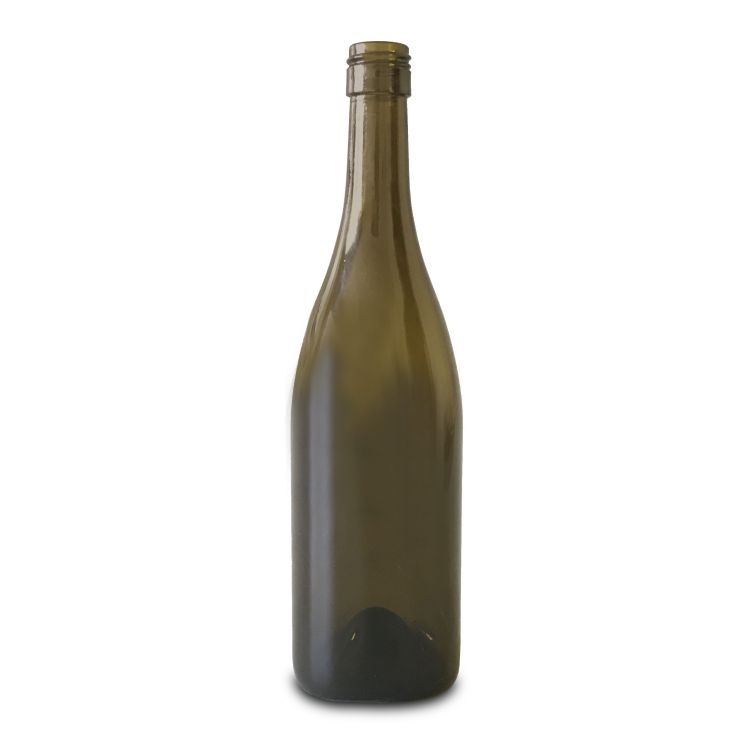
- Origin: Burgundy, France.
- Design features:
- Bottle shoulder: Obvious sloping shoulder design (gentle slope).
- Bottle body: Overall wide, with rounded lines.
- Bottle base: Relatively wide.
- Typical capacity: 750 ml.
- Height: About 11.5 to 12 inches.
- Color: Mostly light green or brown (used to filter ultraviolet rays).
- Use and function: Mainly used to hold classic grape varieties in the Burgundy region, such as Pinot Noir and Chardonnay wines.
- Aging adaptability: The wide bottle provides a large surface area for the wine to contact with the air (especially in the upper space of the liquid surface), which is conducive to the gentle aging of Pinot Noir red wine that needs subtle oxidation in the bottle.
- Easy to pour: The inclined shoulder design helps to concentrate the sediment (mainly in red wine) when pouring the wine, reducing the possibility of sediment flowing out with the wine.
- Protective performance: Traditional light green glass effectively reduces harmful light exposure.
- Wholesale considerations:
- Space occupation: The bottle is wide, which occupies relatively more space in the warehousing and transportation links. Special attention should be paid when planning storage capacity and container space.
- Display effect: The rounded and elegant bottle lines have high visual recognition and beauty.
What is the practical significance of the straight shoulder design of the Bordeaux bottle?
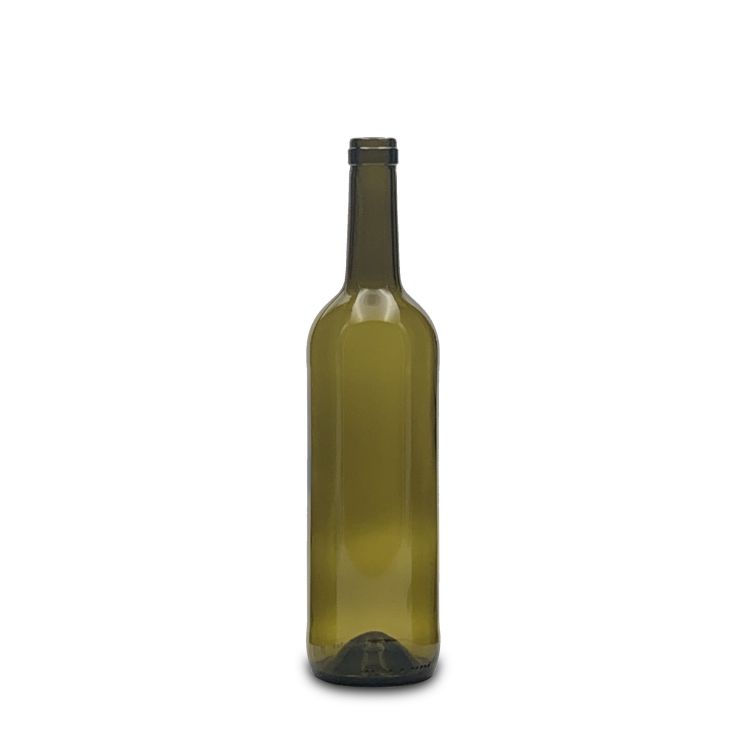
- Origin: Bordeaux, France.
- Design features:
- Shoulder: A distinct vertical straight shoulder design (with sharp edges and corners).
- Bottle: Taller, narrower and more angular than Burgundy bottles.
- Bottle base: Relatively small.
- Typical capacity: 750 ml.
- Height: About 12 to 12.5 inches.
- Color: Mostly dark green (with a stronger light filtering effect) or colorless and transparent (often used in sweet white wines).
- Uses and functions: Widely used in Bordeaux blends (such as Cabernet Sauvignon, Merlot, Cabernet Franc) and many New World red wines and dry white wines (such as Sauvignon Blanc) that imitate the Bordeaux style.
- Sediment management: The vertical straight shoulder design allows sediment (especially tartrate and tannin polymers) to be effectively blocked under the bottle shoulder when pouring wine, reducing the amount entering the wine glass and improving the purity of the wine.
- Storage stability: The narrower bottle design is more stable when stacked and has higher space utilization efficiency.
- Protection performance: Dark green glass provides excellent light protection.
- Wholesale advantages:
- Storage efficiency: The bottle shape is regular, especially the highly unified one, which is conducive to efficient stacking, significantly saving storage and transportation space and reducing costs.
- Market versatility: The most popular bottle shape, with high demand and strong compatibility.
What kind of wine is the slender design of the Alsace/Moselle bottle (flute bottle) for?
- Name and Origin: In the Mosel region of Germany, it is often called the “Mosel bottle”, and in the Alsace region of France, it is called the “Alsace bottle” or “Flute”. The two are similar in shape and have the same origin but with slight differences in habits.
- Design Features:
- Shoulder: No shoulder design, the bottle body and the neck of the bottle are smoothly transitioned.
- Bottle: Very slender and tall (the tallest among the mainstream bottles).
- Typical Capacity: 750 ml, but the traditional German Mosel bottle also has a 700 ml specification (partly due to historical tariffs).
- Height: About 13 inches.
- Color: Light green (common), brown or colorless and transparent.
- Application and function: Mainly used for sweet or dry white wines from Mosel, Rheinhessen and Alsace in Germany, such as Riesling, Gewürztraminer, Pinot Gris and Muscat.
- Style adaptation: The slim bottle shape is easier to enhance its light, aromatic and clear product image.
- Easy to pour: The neckless design is easy to clean and fill. The high bottle body makes it highly visually recognizable on the shelf.
- Storage and protection: The bottle shape is slim and the unit weight is light, but the stacking stability is slightly lower than other bottle shapes; usually corresponding to young ready-to-drink wines that do not require long-term aging.
- Wholesale considerations:
- Space and packaging: The height is significant, requiring the height of the packaging box and the height of the shelf, but the width is narrow, so more bottles can be placed in a limited plane.
- Brand recognition: The unique tall bottle has a very high visual impact, which helps the brand stand out at the retail terminal.
- Market positioning: Often associated with high-quality, unique white wine.
Why are champagne bottles particularly thick and sturdy?
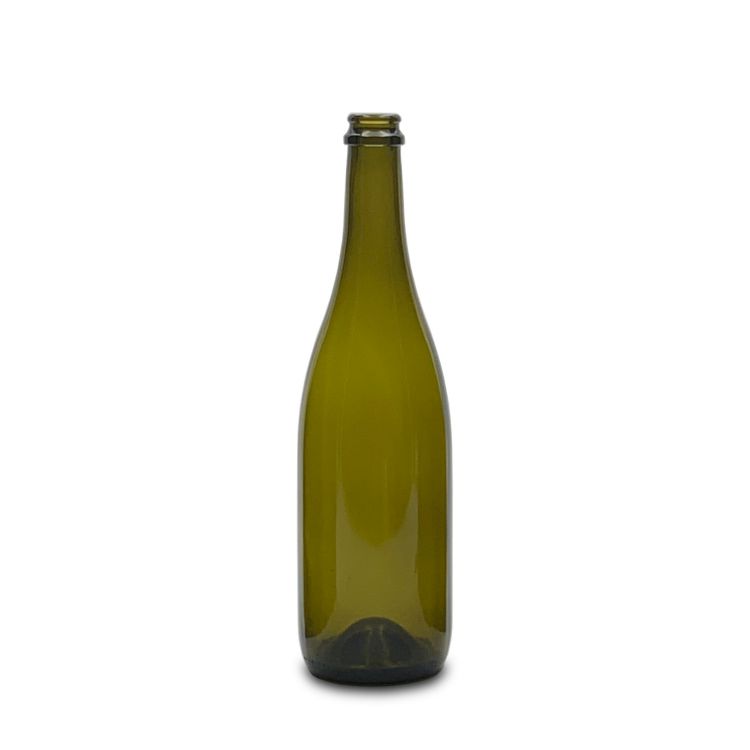
- Origin: Champagne, France (strictly protected by law).
- Design features:
- Bottle shoulder: A sloping shoulder design similar to that of a Burgundy bottle.
- Bottle: Extremely thick and sturdy, the heaviest of all mainstream wine bottles. The wall thickness is significantly higher than that of ordinary wine bottles.
- Bottom: Punt depth. Wide and stable.
- Neck: Special design, with wire cage (Muselet) to fix mushroom-shaped cork.
- Typical capacity: 750 ml (standard champagne bottle), other specifications such as half bottle (375 ml), Magnum (1.5L), Jeroboam (3L) are also common.
- Height: About 12 inches (but larger and thicker in diameter).
- Color: Mostly dark green (a few pink champagnes use colorless bottles).
- Functionality and safety requirements: Designed to withstand the high pressure (usually 6 bar or more) generated by secondary fermentation in the bottle.
- Pressure-resistant structure:
- Thick wall: Provides basic pressure-bearing capacity.
- Deep Punt: Enhances the strength of the bottom of the bottle, evenly distributes the pressure, improves the stability of the bottle (prevents arching) and the internal pressure tolerance limit.
- Strengthened Bottle Neck: Special reinforcement design for the force concentration point when opening the bottle.
- Wire Cage: Ensures that the cork will not pop out accidentally under high pressure.
- Sediment Management: The inclined shoulder design helps to gather yeast sediment to the bottleneck during the ridding process.
- Wholesale Focus:
- Weight and Cost: The glass material is more, and the unit weight and transportation cost are significantly higher than ordinary wine bottles. The pricing must cover this cost.
- Safe Transportation: Although the bottle is strong, the internal pressure is extremely high, and the packaging, handling, stacking and temperature control requirements are extremely strict to avoid impact or violent shaking.
- Various sizes: Wholesalers should be able to offer a full range of sizes from half bottles to large bottles (such as Nebuchadnezzar 15L) to meet the needs of different occasions.
Why do rosé wine bottles come in so many different shapes?
- Design features: There is no standard shape for a “rosé wine bottle”.
- Common bottle shapes include imitations of Bordeaux bottles (especially outside of Provence), Burgundy bottles, or unique designs that are unique (such as short and fat, streamlined, carved bottles, etc.).
- Common features: The bottle body is often relatively wide (probably to show the color of the wine), and the bottom is usually flat to ensure stable standing.
- Material and color: Increasingly, clear or light-colored glass is used to highlight the pink color of the wine.
- Purpose: Rosé wine is characterized by youth, freshness, freshness, and easy drinking, and is usually not pursued for bottle aging ability. Therefore, bottle design mainly serves marketing and brand positioning:
- Beauty and appeal:Use unique bottle design to attract consumers’ attention and shape brand image.
- Color display: Transparent bottles or wide bottle designs better show the color of rosé wine.
- Wholesale strategy:
- Customization opportunities: Provide diverse and customizable bottle solutions to meet the strong demand of emerging rosé wine brands to create a unique image.
- Packaging support: Unique bottle shapes often require customized packaging boxes or bottle sleeves.
- Market demand: The rosé wine market continues to grow, and wholesalers need to stock a variety of popular and unique bottle options.
Where does the rare Clavelin bottle come from?
- Origin and uniqueness: Special bottle for the Jura region of France.
- Design features:
- Shoulder: Slightly square.
- Bottle: Short and fat.
- Dimensions: Its distinctive feature is the capacity of620 ml (instead of the standard 750 ml).
- Height: Relatively low.
- Color: Dark green.
- Purpose and historical background:
This bottle is used to hold the special yellow wine (Vin Jaune) produced in the Jura region of France.- The origin of 620 ml: Jura Yellow Wine is brewed using a unique process and needs to be aged in oak barrels for more than 6 years and 3 months. During the long oak barrel aging process, part of the wine is lost through volatilization (the “angel’s share”). The capacity of about 620 ml is exactly the typical volume of one liter of initial wine remaining after aging in oak barrels for 6 years and 3 months. The design of the Claverin bottle is precisely to accurately contain this final precious product.
- Wholesale considerations:
- Highly regional: It is only strongly bound to Jura Yellow Wine, and the market demand is small but fixed.
- Collection value: Due to its rarity and the traditional craftsmanship behind it, it has special collection and cultural significance, and the wholesale price is usually higher.
- Supply guarantee: It may be necessary to establish a stable cooperative relationship with suppliers in specific production areas.
How to distinguish between a Rhône bottle and a Burgundy bottle?
- Origin: Rhône Valley, France.
- Design features:
- Shoulder: Sloped shoulder design, with a slightly steeper slope than Burgundy bottles, sometimes appearing tougher.
- Bottle: Slightly taller than Burgundy bottles (typical height is about 12.25 inches) and may be slightly angular.
- Distinctive marks: Many Rhône bottles are decorated with an embossed medallion (embossed relief) below the neck or on the shoulder – the famous Rhône Valley amphora (La Massette) mark.
- Typical capacity: 750 ml.
- Color: Mostly dark green.
- Purpose: Mainly used for Rhône Valley classic GSM blends (Grenache, Syrah, Mourvèdre), as well as white wines such as Viognier, Marsanne, and Roussanne.
- Similarities and differences with Burgundy bottles: Both belong to the oblique shoulder and wide belly bottle type, with similar shapes, but Rhône Valley bottles are usually taller, more upright, and have embossed badges.
- Wholesale perspective:
- Recognition: The embossed badge is its core identification point, and wholesale products should ensure that the embossing is clear and exquisite.
- Region association: This bottle type is the core symbol of Rhône Valley wine and has a clear symbolic meaning of the region of origin.
- Market positioning: Especially suitable for Rhône Valley style wines with strong and powerful packaging style and rich regional characteristics.
Does bottle shape have a substantial impact on wine quality?
Can bottle shape itself change the flavor of wine?
This is a frequently discussed question. From the perspective of modern wine science:
- Limited direct impact: The shape of the wine bottle (such as sloping shoulders, straight shoulders, width) itself does not directly change the core chemical composition or fundamental flavor characteristics of the wine. The key factors that determine the style of wine are grape variety, terroir, brewing process and aging conditions (time, container, environment).
- Indirect effects and functional effects:
- Sediment control: Straight shoulders (Bordeaux) are more effective in isolating sediment at the bottom of the bottle when pouring; sloping shoulders (Burgundy) make it easier to pour.
- Aging microenvironment: The size and shape of the actual headspace in the bottle (affected by the bottle shape) will affect the oxygen exchange in a very small range in the bottle. Wide-bellied bottles (such as Burgundy) have a larger liquid surface area, which may provide a slightly different and subtle environment for red wines that need long-term oxidation aging in bottles (such as Pinot Noir), but this is not a decisive factor.
- Light protection: The depth of bottle color directly affects the efficiency of UV filtration.
- Physical protection: The thickness of the bottle determines the resistance to pressure (such as champagne), impact resistance and stacking load.
- Commercial choice is more important than flavor shaping:
Modern winemakers usually choose bottle shapes based on business practices, regional traditions, market expectations, and the aesthetic effect and cost control of packaging, rather than based on the bottle shape. Can bring measurable flavor enhancement. A certain bottle shape is widely used for a specific type of wine (such as Bordeaux bottles for Cabernet Sauvignon), mainly due to long-term industry practices and consumer associations. - Key points for wholesale decision-making:
Explain to customers the scientific basis for selecting bottle shape, emphasize its functional protection value (light protection, pressure resistance, sedimentation control) and commercial value (brand recognition, cost control, compliance), and avoid over-exaggerating the direct impact of bottle shape on wine quality.
Core considerations for wholesalers to choose wine bottles
How to scientifically evaluate and select bottle types in the wine bottle wholesale business?
Choosing the right wine bottle type is the basis for wholesale business efficiency and customer satisfaction.
- Strictly match the characteristics and needs of the wine:
- Wine type: Following the traditions of the production area and market practices is the basis (such as Burgundy bottles are preferred for Pinot Noir, Bordeaux bottles are preferred for Cabernet Sauvignon, flute bottles are preferred for sweet white wine, and champagne bottles are mandatory for sparkling wine). For emerging wines or innovative products, provide suggestions that match their style positioning (such as boutique rosé wine can choose a bottle with a novel design).
- Aging expectations: Clarify the aging potential of the customer’s wine. Long-term aging wines should choose dark glass bottles and more sturdy bottle types. For ready-to-drink young wines, consider lower-cost bottles or transparent/light-colored bottles (need to be paired with light-proof packaging or quick sales).
- Pressure requirements: Sparkling wines (Champagne, Prosecco, Cava, etc.) must use fortified champagne bottles or sparkling wine bottles that meet safety standards. No compromise is allowed.
- Supply chain efficiency and cost control:
- Warehousing and transportation:
- Size and shape: Calculate the space utilization and container loading rate of different bottle types after stacking in detail. Standard size and regular bottle types such as Bordeaux bottles have significant advantages.
- Weight: Champagne bottles and refilled bottles significantly increase the freight cost per bottle and the unit value cost.
- Packaging compatibility: Ensure the compatibility of the bottle type with its matching wine box and partition filling materials, and optimize the packaging process and protective performance.
- Inventory management: Common bottle types with high standardization (such as standard 750ml Bordeaux/Burgundy/flute-shaped dark green bottles) and stable demand have lower inventory risks. Unconventional bottle shapes (such as Claverin and special rosé bottles) require precise control of purchase volume and inventory period.
- Warehousing and transportation:
- Market recognition and sales potential:
- Consumer cognition: Classic bottle shapes (such as Bordeaux bottles) have a solid position in the minds of consumers and are most accepted in the market.
- Shelf influence: Unique bottle shapes (tall and thin flute bottles, shaped rosé bottles, embossed Rhone bottles) can instantly catch the eye at the retail terminal, enhance the brand image and pricing space (provided that the product itself is of excellent quality).
- Brand positioning: Bottle shape is an important carrier of brand image. High-end brands prefer heavy-textured bottles (such as heavy Bordeaux bottles and champagne bottles), while brands pursuing cost-effectiveness may choose lightweight bottles.
- Regulations and sustainability:
- Material specifications: Ensure that the selected bottle type meets the regulatory requirements for glass packaging in the target market (such as heavy metal content).
- Environmental trends: Pay attention to the development and market acceptance of lightweight bottles (thinner but strong enough glass), which not only reduces the amount of raw materials and transportation carbon emissions, but also meets the environmental protection demands of customers, but needs to balance the strength requirements.
- Supplier capabilities and services:
- Choose a glass bottle manufacturer or large supplier with the ability to steadily supply high-quality bottles.
- Evaluate the breadth of its product line (whether it can cover from standard bottles to specialty bottles) and customization capabilities (color, bottle shoulder/body/bottom minor adjustments, embossing customization).
- Compare prices, minimum order quantities (MOQs), delivery cycles, and logistics service reliability.
Bottle shape – the integration of functional inheritance and commercial value
The diversity of wine bottle shapes is the result of the long-term evolution of production area traditions, process requirements, functional optimization and market aesthetics. From the initial pottery jars and wooden barrels to standardized glass bottles of various shapes, their evolution has always revolved around the core goals of protecting wine quality, facilitating operation, improving storage efficiency and shaping brand image.
For wine bottle wholesalers, accurately understanding the physical characteristics, functional advantages and application scenarios of each mainstream bottle type, while understanding the efficiency of warehousing and logistics (space, weight), market demand and customer product positioning, is the core ability to build inventory portfolios, serve customer selection suggestions and optimize their own operations. The choice of bottle type is far from a simple container selection, but a key decision-making link that integrates technical understanding and commercial considerations.
Bordeaux bottles still dominate the market with their efficient space utilization and universality; Burgundy bottles have consolidated their classic status with their adaptability to the aging of specific wines and elegant appearance; the high-pressure technical barriers of champagne bottles have become the safe foundation for sparkling wine; Alsace/Moselle bottles and Rhone bottles represent distinct regional labels; and the flexibility of rosé bottles and the traditional adherence of Claverie bottles together depict a rich picture of the world of wine bottles.
When providing customers with bottle solutions, in-depth understanding of their wine characteristics, market goals and cost budgets, and providing pragmatic suggestions based on professional knowledge will significantly enhance your value as a professional supplier, and ultimately translate into sustainable inquiries and business growth.

